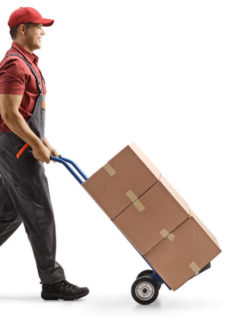The average worker stands up for more than 20 hours a week on average, something that can put enormous strain on muscles and joints. Investing in an anti-fatigue mat is a strategic move to protect your business and employees from ergonomic and financial consequences. In this selection guide, you will find out all about anti-fatigue mats, ergonomic hazards in the workplace and which type of mat offers a solution. Will you make the opening move?
1. Why choose an anti-fatigue mat?
Did you know that 57% of all Belgian work-related health complaints in 2022 were due to musculoskeletal disorders (MSDs)? Musculoskeletal disorders represent a range of painful conditions that affect the muscles, tendons, ligaments, joints and bones of the human body. These conditions range from mild discomfort to severe and long-term disabilities. Besides, it is not just a matter of physical strain; proper physical posture also plays a crucial role in the well-being of workers.
Together with other personal protective equipment, the anti-fatigue mat is a powerful solution to prevent these physical pains and disorders. Finally, anti-fatigue mats are ergonomic tools to help workers support their feet, legs and general posture in the healthiest way possible.
In a warehouse or other workplaces, workers sometimes stand in static or semi-static positions for long periods of time. This can result in annoying pain in joints and muscles, especially in the lower limbs. Not surprisingly, this discomfort can eventually lead to long-term health problems that negatively affect the productivity and well-being of your team. To effectively minimise the risk of such musculoskeletal disorders (MSA), the use of anti-fatigue mats is highly recommended.

2. How do I choose the right anti-fatigue mat?
To ensure that an anti-fatigue mat meets your needs and actually has a positive impact on your employees’ attitude, it is important that the mat is tailored to the nature of your activities. As a second point, we recommend taking into account the different zones and surfaces in your working environment. The mats should not create an obstacle, slip hazard or trip hazard in the warehouse. Thirdly, anti-fatigue mats should have certain properties to suit the sector in which they are used.
► 2.1 Shape and surface
Anti-fatigue mats are available in different formats including standard mats that exist in pre-measured variants. Such a standard mat obviously works perfectly in most locations, but for workspaces with an irregular shape or particularly large surface area, it is better to choose a configurable anti-fatigue mat. These mats consist of tiles and edges that you click together yourself, so the final shape is sure to fit your work zone. Specifically looking for an anti-fatigue mat for workers on assembly lines or packing tables? Then we recommend an anti-fatigue mat on rolls. Indeed, when ordering this mat, you choose the required length yourself.
► 2.2 Applications
Like a chameleon, a standardised anti-fatigue mat is always adapted to its environment. For the chemical industry, laboratories and healthcare, an anti-fatigue mat has corrosion-resistant properties as protection against aggressive chemicals. Anti-fatigue mats for commercial kitchens and machine workshops, on the other hand, contain oil and grease-resistant properties… and there are many more examples. For general tasks such as assembly, production or packaging work in warehouses or retail stores, RAJA is the right place for you. Our range of slip-resistant mats is suitable for dry environments and offer an ergonomic solution for your employees. Find out below which anti-fatigue mat suits your working environment:
| Anti-fatigue mat Skywalker 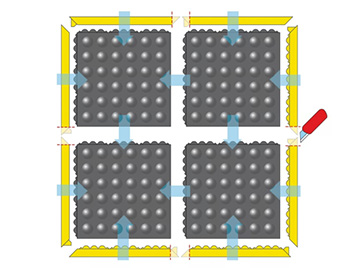 |
Ergonomic mat Skystep 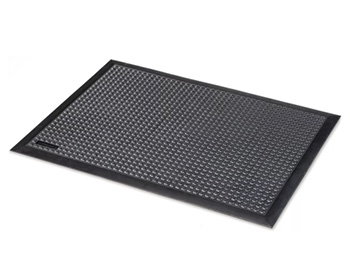 |
Anti-fatigue mat Cushion Trax 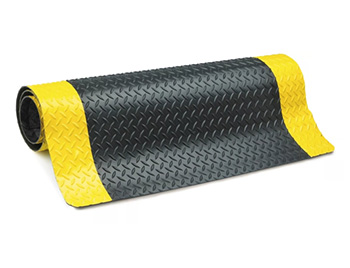 |
| –For spaces with irregular shapes. –Configurable. –Slip resistance R9. –Yellow striking edges. –L x W: 91 x 91 cm. |
–For general use. –Economical. – Slipresistance R9. –Easily installed. –3 standard sizes. |
–For assembly lines. –Choose yourown length.* –Slip resistanceR10. –Yellow striking edges. –Width 91 cm. |
* When ordering, please indicate the desired length.
]3. What are the benefits of an ergonomic mat?
In a warehouse or other workplaces, workers sometimes stand for hours in static or semi-static positions. This can result in annoying pain in joints and muscles, especially in the lower limbs. Not surprisingly, this discomfort can eventually lead to long-term health problems that negatively affect your team’s productivity and well-being. To effectively minimise the risk of such musculoskeletal disorders (MSA), we recommend the integration of anti-fatigue mats. But what exactly makes such a mat effective and what then are the concrete benefits? You can read all about it below.
► 3.1 Benefits for your health and well-being
An anti-fatigue mat features a grooved structure with studs that provides an uneven surface. Thanks to this clever design, workers are encouraged to keep their feet and legs moving, even for activities that require little movement. Through these subtle foot and leg movements, they can avoid MSA-related pain often associated with prolonged standing. Examples include back pain, joint problems and discomfort in the lumbar region. They also absorb the impact of constant strain on joints, resulting in less strain and discomfort for your employees, as well as stimulating blood circulation for improved well-being. Improved blood circulation is not only good for your health, but it also keeps you awake and alert. That’s why we call this product an “anti-fatigue mat”.
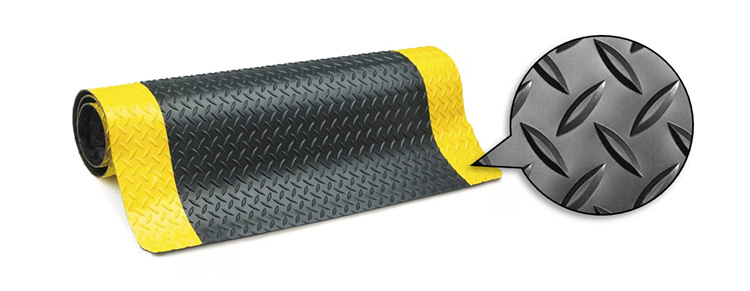
► 3.2 Benefits for your safety
Firstly, anti-slip mats contain a certain amount of slip resistance that is substantiated according to a German standard, the DIN 51130. This German industry standard is used to assess the non-slip performance of flooring materials, especially in environments where slip hazards are a risk, such as wet and slippery surfaces. The DIN 51130 standard classifies flooring materials according to their slip resistance and helps determine which material is suitable for which application. The test method in accordance with DIN 51130 involves measuring the slip resistance of a flooring material when exposed to a slope. The test is performed using a standardised test ramp and a specialist treading the floor material with special shoes.
The floor material is wetted and the slope is gradually increased until the tester starts to slip. The slope at which this happens is called the “R-value” and is used to classify the slip resistance level of the material. R-values are classified into categories ranging from standard slip resistance R9 to the highest slip resistance R13. The higher the R-value, the better the slip resistance of the material. According to DIN 51130, the classification of a flooring material depends on the environment in which it is used and the risk of slipping and falling. DIN 51130 is therefore an important yardstick for the construction and safety industry, as well as for sectors in which slippery and wet surfaces pose a potential threat to people’s safety, such as public areas, kitchens, bathrooms and industrial environments.
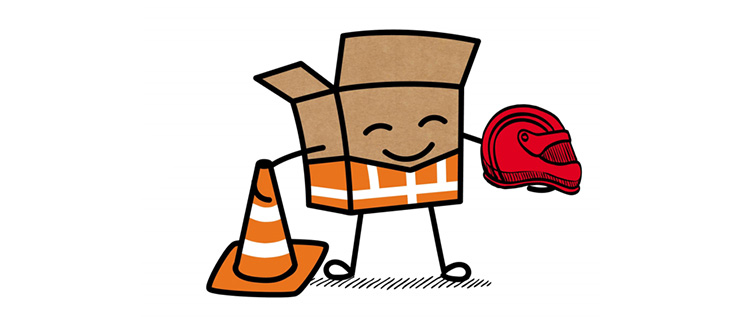
Secondly, ergonomic mats typically have beveled edges. These edges are designed to provide a smooth transition between the mat and the adjacent floor to reduce the risk of tripping. Ideal in busy environments or during busy periods, when fast and frantic movement does occur.
]4. Here’s how to make your workplace even more ergonomic
Although anti-fatigue mats help correct physical posture and stimulate circulation, there are still dangers lurking around the corner. Indeed, prolonged standing is not the only cause of musculoskeletal disorders. Numerous other logistical tasks can cause physical discomfort. So for maximum MSA prevention in the workplace, consider other aids as well. We take a look:
| Modular packing table 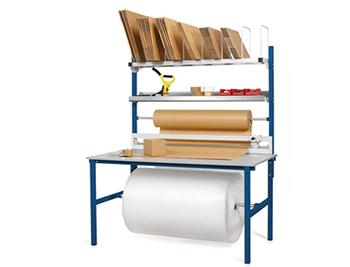 |
Automatic film wrapper 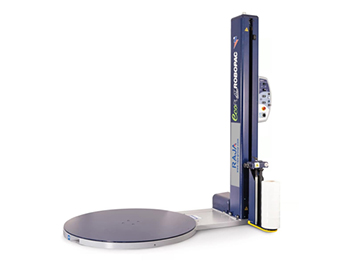 |
Shopping trolley with flexible shelf 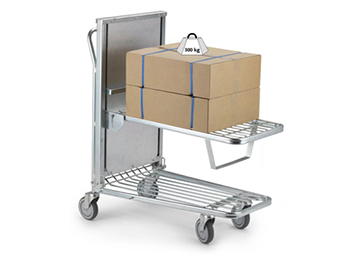 |
| –Everything within easy reach. –Optimal space allocation. –Improves posture. –Less stressful movements. |
–Turntable . –Mechanical brake. –No physical exertion. –For homogeneous pallet loads. |
–Smooth internal transport. –Ergonomic lifting and transporting. –Adjust the desired height. |













